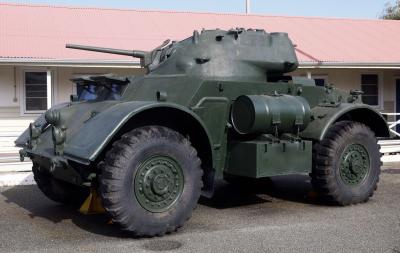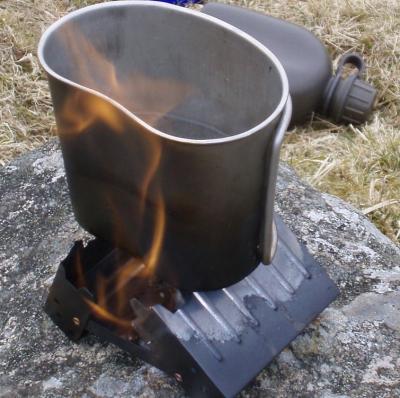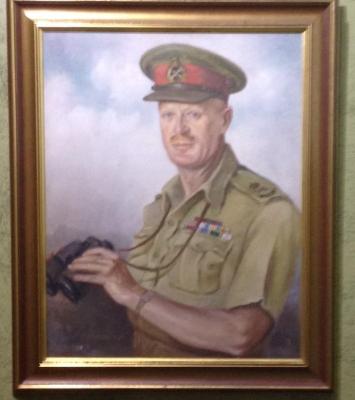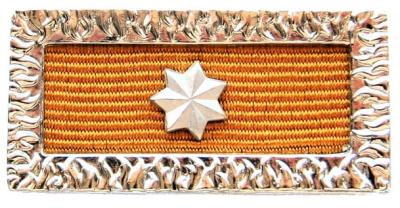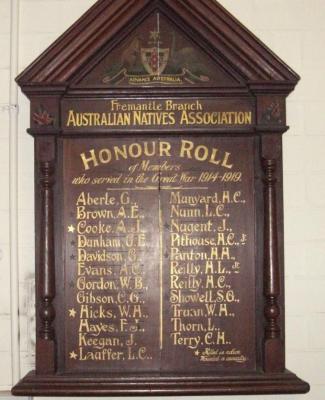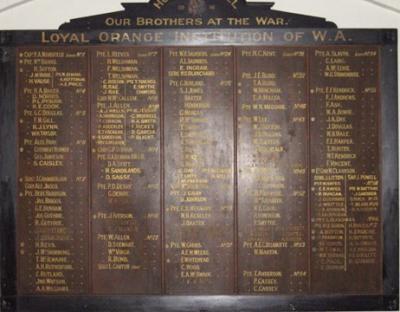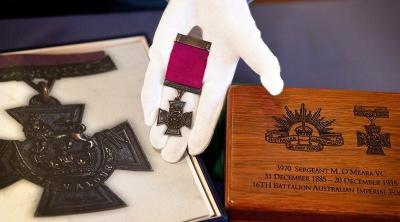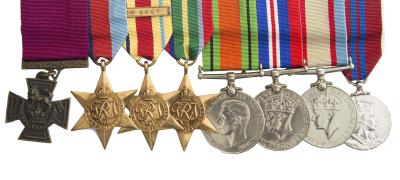Post 1945, Perth Staghound Armoured Car, 10 Light Horse
TheT17E1 Armoured Car was an American armored car design produced during World War Two. While it never saw service with frontline US forces, it was supplied to British and other Commonwealth forces, including Australia, during the war, under the name Staghound. Altogether 3,844 Staghounds were produced with 279 delivered to Australia beginning in late 1943. It remained in service until 1970.
The Staghound had a robust tank-like welded hull. with a 3 man, cast turret centrally mounted Twin six cylinder Chevrolet engines mated to two Hydramatic transmissions gave the Staghound with a top speed of 55 mph. The engines could be operated individually in case of breakdown. Large 14.00 x 20 tyres enabled the Staghound to take advantage of its all-wheel drive capability.
A 37mm gun was mounted in the turret together with a co-axial .30 inch Browning Machine Gun. Another Browning was mounted in a ball-mount in the right side of the glacis plate. There was also provision for a third Browning mounted on the turret for anti-aircraft defence. It could carry 103 rounds of 37mm ammunition and 5,000 rounds of .30 inch ammunition.
The Staghound was an innovative design that incorporated advanced features for the time. Its two rear-facing 6-cylinder engines with automatic transmissions (with 4 forward and 1 reverse gears) feed through a transfer case to drive both axles. Either two- or four-wheel drive could be selected. Either engine could be shut down while in motion and taken out of the drive train. Additionally, a power steering pump was incorporated that could be switched on or off manually from the driver's instrument panel depending on steering conditions. Steering and suspension components were directly attached to the hull as the structure was rigid enough to dispense with the need for a separate chassis.
Although Staghound Armoured Car entered service with the Australian Army in 1943, it is best known in Australia for its post-World War Two service with the Citizen Military Forces (CMF) armoured units. Despite its large size, it was a popular vehicle in its time. It was officially designated Car, Armoured, Heavy, but usually the users knew it simply as the Stag.
During World War Two, Staghound and were used in training by the 1st Australian Armoured Division in Western Australia. Subsequently 18 vehicles were initially used with the 1st Armoured Car Squadron serving with the British Commonwealth Occupation Force in Japan. When the Citizen Military Forces were re-activated in 1948, they were equipped with existing World War Two equipment. The Staghound often replaced Matilda and Grant tanks for Home Training as initially they were much more reliable, easier to maintain and had more spares available. As a wheeled vehicle, they were much more suitable for training purposes.
Details
Details
In Australian wartime service the Staghounds were normally finished in a single dark shade, probably Vehicle Dark Green or Khaki Green No.3. In the 1950s and 1960s the cars could either be left in the wartime colours or repainted in Deep Bronze Green, or occasionally the Olive Drab introduced in 1967.For unknown reasons, the complete US Army registration number was painted on Australian vehicles, including the USA prefix. Later the USA prefix was dropped, but the seven digit registration number was retained. Vehicles seen in Australian Service usually carried numbers beginning with 6022xxx, 6023xxx or 6024xxx. Mostly the numbers were painted in white, although some camouflaged vehicles carried black numbers.
A crew of five operated the vehicle – a driver and co-driver/bow machine gunner located in the forward section of the hull and the commander, gunner and loader sitting in the turret. Although the turret was designed by the US Rock Island Arsenal, early liaison resulted in the inclusion of British features such as putting at least two crew in the turret and placing the radio in the turret so that it was close to the commander.
A No. 19 Wireless Set was fitted into the turret bulge for communication. Staghounds in Australia were fitted with a stowage box on the rear of the turret bulge. This toolbox was identical to those fitted to the Australian Cruiser Tank Mk1 (Sentinel). A jettisonable fuel tank could be mounted on each side of the hull and these tanks, together with the vehicle’s main fuel tank, provided a total fuel capacity of 127 gallons.
When 10th West Australian Mounted Infantry was reformed as a CMF unit in 1949, it was equipped with Staghounds and Canadian Armoured Cars. When the 10th Light Horse title was restored in 1956, the Staghounds operated with Ferret Scout Cars, White and Saracen APCs. Reorganisation, restructuring and re-rolling and increasing maintenance and spare parts issues saw their gradual removal from service and disposal.
Australian Army Museum of Western Australia
Australian Army Museum of Western Australia
More items like this
Other items from Australian Army Museum of Western Australia
- Immersion Heater
- M59 Field Stove with M2 Burner
- Hexamine Stove
- Portrait - Gordon Bennett by Margaret Gordon
- World War 2, Western Australia, Perth, Desk of Major General Gordon Bennett, 1942
- Meritorious Unit Citation
- World War 1, Honour Board - Australian Natives Association
- World War 1, Honour Board - Loyal Orange Institution, 1916
- Honour Board - Loyal Orange Order - Lodge 37 - "No Surrender"
- Honour Roll - Boan Brothers - World War 1
- Victoria Cross - Sergeant Martin O'Meara VC, Pozieres France, 9-12 August 1916
- Victoria Cross - Private Tom Starcevich VC, Beaufort North Borneo, 28 June 1945

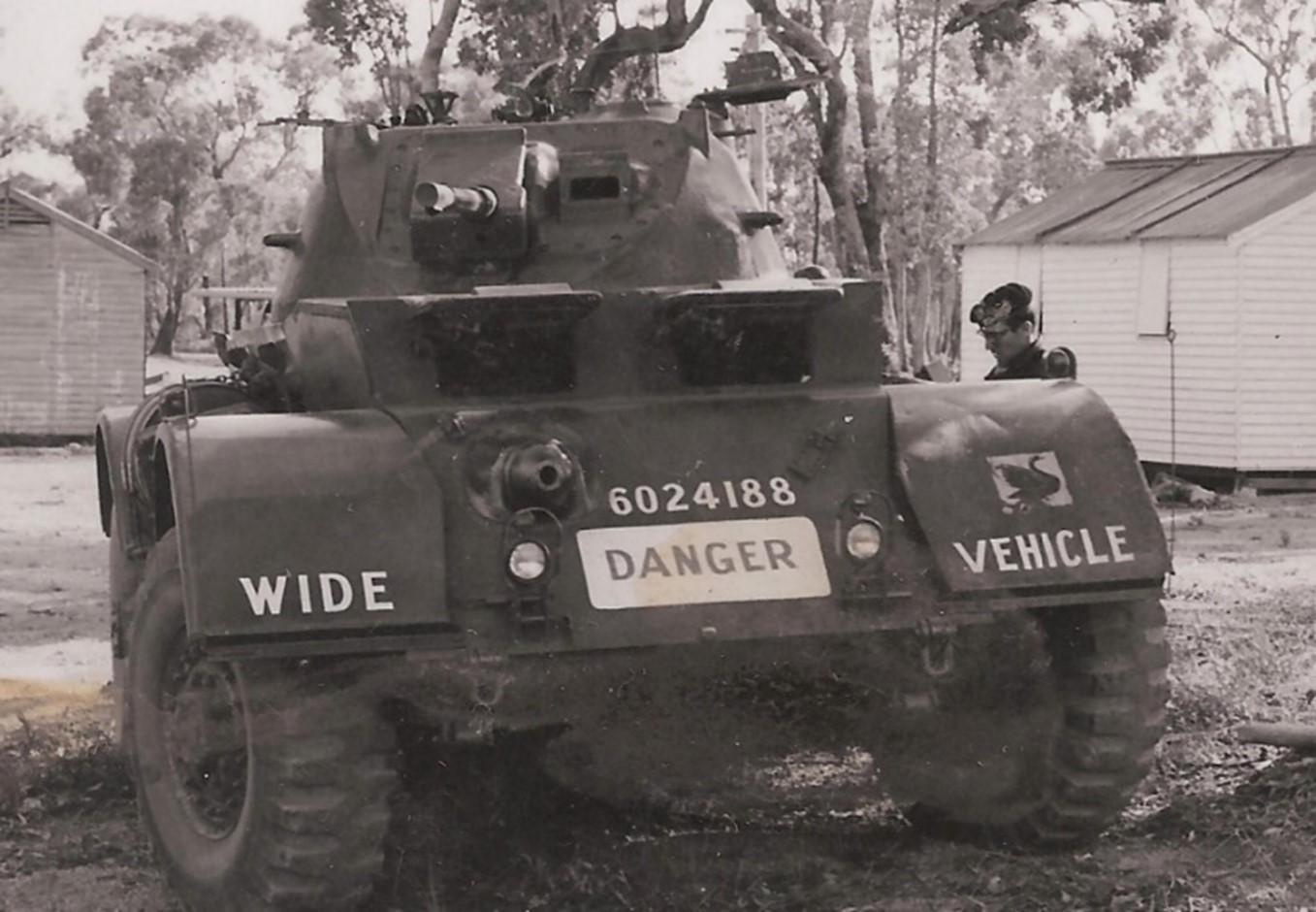
Scan this QR code to open this page on your phone ->

